Welcome to Richconn, where precision meets perfection in CNC machining. In the world of machining, ensuring the cleanliness of machined parts is not just a step; it's a commitment to excellence. As a precision machine shop, we understand the pivotal role that clean machined parts play in achieving top-notch quality. In this comprehensive guide, we will delve into the importance of cleaning machined parts, best practices, tools and equipment selection, and address common challenges faced in CNC machining.
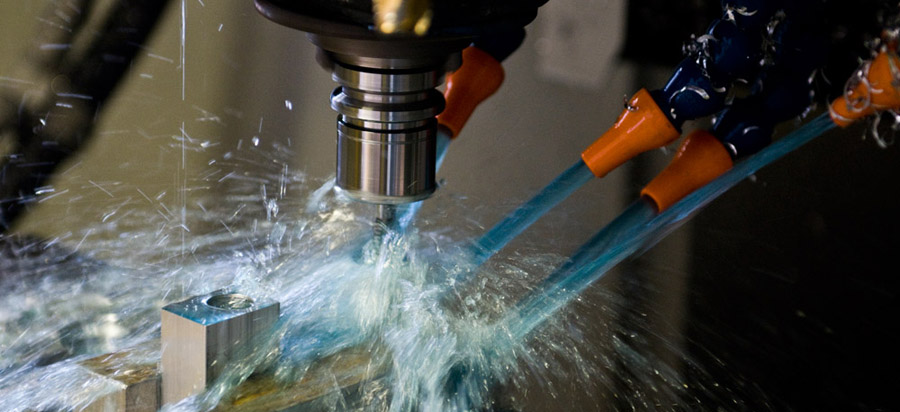
Machining excellence begins with cleanliness. Clean machined parts not only enhance performance but also extend the overall lifespan of the components. Accumulation of impurities and contaminants can adversely affect the precision and quality achieved through CNC machining. Let's explore the profound impact that cleaning has on the performance and longevity of machined parts.
In the intricate world of CNC machining, cleanliness is the cornerstone of precision. The tiniest particle can disrupt the delicate dance of machining processes, leading to defects, inaccuracies, and reduced component lifespan. Each machining operation demands an environment free from contaminants, ensuring that every cut and movement is executed with the utmost accuracy. Clean machined parts are not just a byproduct; they are the essence of superior CNC machining.
Cleanliness is directly proportional to performance in CNC machining. A meticulously cleaned machined part experiences reduced friction, contributing to smoother movements and prolonged equipment life. The absence of contaminants ensures that each cut is executed as intended, minimizing the risk of tool wear and tear. From the initial design phase to the final product, cleanliness is the silent force that elevates the precision and efficiency of CNC machining.
In the realm of CNC machining, preventing the accumulation of impurities and contamination is paramount. Neglecting proper cleaning procedures can lead to issues such as decreased functionality, increased wear and tear, and compromised dimensional accuracy. Join us as we unveil the strategies to keep machined parts pristine and safeguard them against potential damages caused by impurities.
Preventing impurities from infiltrating machined parts requires a proactive approach. Implementing stringent measures in the machining environment, such as controlled air quality, filtered coolant systems, and designated clean zones, is essential. Regular equipment maintenance and thorough inspections are integral components of impurity prevention. By integrating these strategies, you fortify your CNC machining process against the intrusion of contaminants, ensuring the longevity and reliability of machined parts.
CNC machining often involves the use of coolants to dissipate heat generated during the machining process. However, these coolants can become a breeding ground for contaminants if not managed properly. Implementing effective coolant management systems, including regular filtration, monitoring, and replacement, is crucial. This not only preserves the coolant's efficacy but also prevents contamination that could compromise the cleanliness of machined parts.
As we navigate through the intricacies of preventing impurities and contamination in CNC machining, it's evident that a proactive approach and meticulous attention to detail are key.
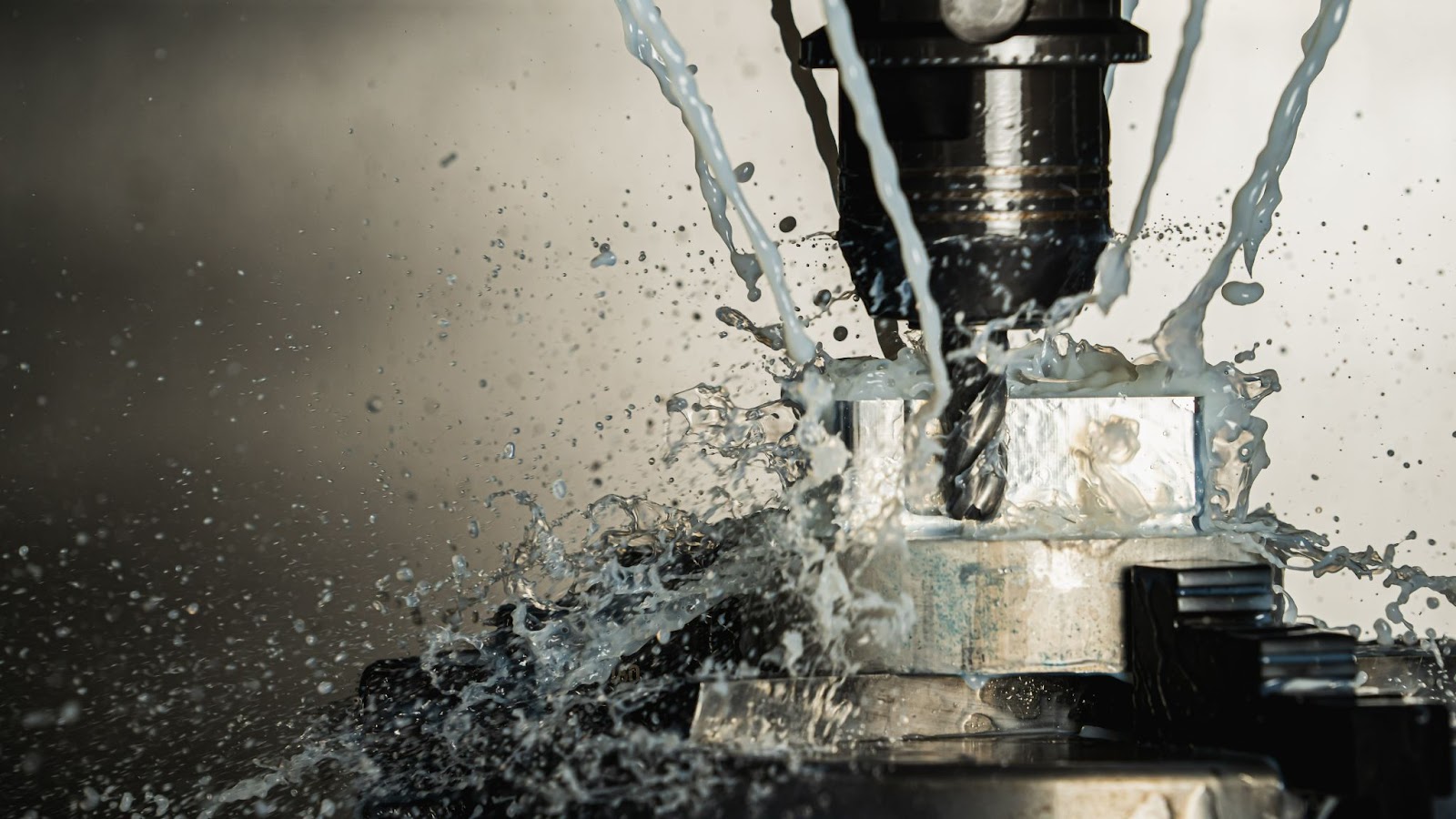
Embarking on the journey of cleaning machined parts requires a systematic approach. From preparation to the selection and application of cleaning agents, understanding the best practices ensures an effective and thorough cleaning process. Follow our detailed guide as we walk you through the steps and considerations essential for achieving optimal cleanliness in CNC machined parts.
Before diving into the cleaning process, thorough preparation of machined parts is crucial. Begin by removing excess oils, greases, and loose particles from the surface. Utilize compressed air, brushes, or appropriate tools to ensure a clean starting point. This initial step sets the foundation for a more effective and efficient cleaning process.
Table 1: Machined Part Preparation Checklist
| Preparation Step | Tools/Equipment Required |
|---|---|
| Remove excess oils and greases | Clean, lint-free cloth; degreasing agent |
| Eliminate loose particles | Compressed air; soft brushes |
| Ensure dry and clean work surface | Cleanroom environment or designated area |
2. Selecting the Right Cleaning Agents: Tailoring Solutions to Machining Requirements
Choosing the appropriate cleaning agent is a critical aspect of the cleaning process. Consider the material of the machined part, the nature of contaminants, and any specific machining requirements. For example, aqueous-based cleaners are effective for water-soluble contaminants, while solvent-based cleaners excel in removing oil-based residues.
Table 2: Cleaning Agent Selection Guide
| Contaminant Type | Recommended Cleaning Agent |
|---|---|
| Oil-based residues | Solvent-based cleaner |
| Water-soluble contaminants | Aqueous-based cleaner |
| Greases and lubricants | Degreasing agent or solvent cleaner |
A well-defined cleaning process ensures consistency and thoroughness. Follow these steps to achieve optimal cleanliness:
Initial Inspection: Examine the machined part for visible contaminants.
Pre-cleaning: Remove large particles or residues using appropriate tools.
Application of Cleaning Agent: Apply the selected cleaning agent using suitable methods such as spraying, immersion, or wiping.
Agitation: Use brushes, ultrasonic cleaners, or other agitation methods to enhance the cleaning action.
Rinsing: Ensure thorough rinsing to remove cleaning agents and loosened contaminants.
Drying: Use controlled air drying or designated drying areas to prevent recontamination.
Table 3: Cleaning Process Checklist
| Cleaning Step | Recommended Methods/Tools |
|---|---|
| Initial Inspection | Visual examination |
| Pre-cleaning | Compressed air; soft brushes |
| Application of Cleaning Agent | Spraying, immersion, or wiping |
| Agitation | Brushes, ultrasonic cleaners |
| Rinsing | Clean water or designated rinsing area |
| Drying | Controlled air drying or designated area |
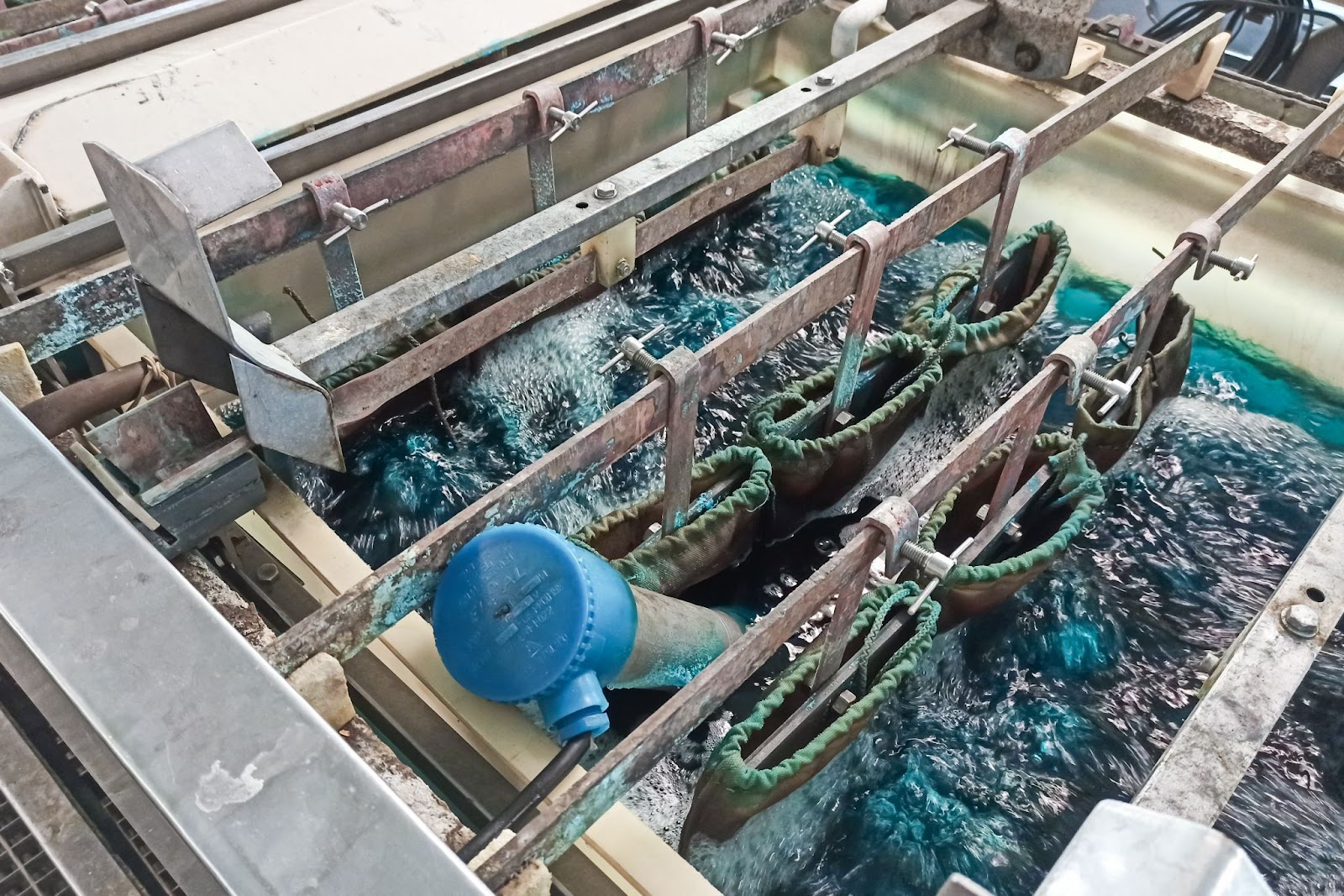
Not all cleaning agents are created equal, especially in the world of CNC machining. Dive into the intricacies of selecting and using cleaning agents tailored for the CNC machining environment. Gain insights into the safety and environmental considerations when choosing the right cleaning agents for your machined parts.
In CNC machining, various types of cleaning agents are available, each designed to address specific contaminants and materials. Understanding the distinctions between solvent-based, aqueous-based, and bio-based cleaners is essential. Solvent-based cleaners excel in removing oil-based residues, while aqueous-based cleaners are effective for water-soluble contaminants. Bio-based cleaners provide an environmentally friendly alternative.
Table 4: Types of Cleaning Agents and Their Applications
| Cleaning Agent Type | Application |
|---|---|
| Solvent-based Cleaners | Effective for oil-based residues; use in well-ventilated areas |
| Aqueous-based Cleaners | Suitable for water-soluble contaminants; environmentally friendly |
| Bio-based Cleaners | Environmentally friendly alternative; suitable for various contaminants |
Different materials react differently to cleaning agents. Consider the compatibility of the cleaning agent with the machined material to avoid potential damage. For instance, certain solvents may be too aggressive for certain plastics or sensitive alloys. Always refer to material safety data sheets (MSDS) and conduct compatibility tests before widespread use.
Table 5: Material Compatibility and Recommended Cleaning Agents
| Machined Material | Recommended Cleaning Agent |
|---|---|
| Metals (e.g., aluminum, steel) | Solvent-based cleaner or aqueous-based cleaner |
| Plastics | Mild aqueous-based cleaner or bio-based cleaner |
| Exotic alloys | Compatibility testing recommended before choosing a cleaner |
While effectiveness is crucial, safety and environmental considerations should not be overlooked. Solvent-based cleaners may be effective but often come with health and environmental risks. Aqueous-based and bio-based cleaners offer safer alternatives without compromising performance. Always prioritize the health and safety of operators and adhere to environmental regulations.
Table 6: Safety and Environmental Considerations
| Cleaning Agent Type | Safety Considerations | Environmental Impact |
|---|---|---|
| Solvent-based Cleaners | Ventilation required; potential health risks | Environmental impact; proper disposal required |
| Aqueous-based Cleaners | Safer for operators; minimal health risks | Lower environmental impact; compliant with regulations |
| Bio-based Cleaners | Environmentally friendly; low health risks for operators | Biodegradable; minimal environmental impact |
As we navigate the labyrinth of cleaning agents, it's evident that making informed choices involves a careful balance between effectiveness, material compatibility, and environmental considerations.
The journey doesn't end with cleaning; it extends to inspecting and validating the results. Learn about effective inspection methods that guarantee machined parts are not just cleaned but cleaned to perfection. Utilize advanced detection tools and techniques to validate the cleanliness of machined parts, ensuring the highest quality standards are met.
Visual inspection remains one of the most straightforward yet essential methods to evaluate the cleanliness of machined parts. Utilize adequate lighting and magnification tools to examine surfaces for any remaining contaminants, residues, or imperfections. This initial inspection sets the stage for more in-depth validation processes.
Table 7: Visual Inspection Guidelines
| Aspect to Inspect | Tools/Equipment Required |
|---|---|
| Residue or Contaminant Presence | Adequate lighting; magnification tools |
| Surface Imperfections | Visual inspection for scratches, dents, or irregularities |
Quantifying cleanliness involves particle counting, a crucial step in determining the effectiveness of the cleaning process. Particle counting devices, such as laser particle counters, measure the number and size of particles on a machined part's surface. Establishing acceptable particle count levels is essential for quality assurance.
Table 8: Particle Counting Parameters
| Particle Count Level | Acceptable Range (per specified area) |
|---|---|
| Cleanroom Class 1000 | Less than 1,000 particles ≥ 0.5μm per cubic foot |
| Cleanroom Class 100 | Less than 100 particles ≥ 0.5μm per cubic foot |
| ISO Class 5 | Less than 3,520 particles ≥ 0.5μm per cubic meter |
The water break test is a simple yet effective method to assess the surface cleanliness of machined parts. It involves applying a thin film of water on the surface and observing its behavior. A clean surface allows water to form an unbroken film, while contaminants disrupt the film, causing water to bead or break.
Table 9: Water Break Test Results
| Water Film Behavior | Interpretation |
|---|---|
| Unbroken Film | Clean surface; effective cleaning |
| Beading or Breaking | Presence of contaminants; additional cleaning required |
For machined parts demanding the highest precision, advanced inspection techniques become imperative. Utilize tools such as scanning electron microscopes (SEM) or white light interferometers to scrutinize surfaces at a microscopic level. These techniques reveal minute imperfections and ensure adherence to the most stringent quality standards.
Table 10: Advanced Inspection Techniques
| Inspection Technique | Applications |
|---|---|
| Scanning Electron Microscope (SEM) | Detailed surface analysis at a microscopic level |
| White Light Interferometer | Precise measurement of surface roughness and imperfections |
In the pursuit of perfection, the inspection and validation phase is non-negotiable. By incorporating these methods, you guarantee that cleanliness is not just a superficial achievement but an intrinsic characteristic of machined parts.
CNC machining comes with its set of challenges, and cleaning is no exception. Unravel the solutions to common cleaning challenges encountered in CNC machining, including intricate part structures and challenging materials. Equip yourself with practical solutions to overcome these challenges and ensure a seamless cleaning process.
Challenge: Machined parts often feature intricate structures with crevices and recesses that are challenging to access during the cleaning process. These complex designs create areas where contaminants can accumulate, impacting the overall cleanliness of the part.
Solution: Implement a multi-pronged approach to cleaning intricate part structures. Utilize specialized cleaning tools such as brushes with varying bristle lengths to reach into crevices. Consider employing ultrasonic cleaning equipment, which uses high-frequency sound waves to create micro-agitation, effectively reaching challenging areas. Additionally, periodic rotation or repositioning of the part during the cleaning process ensures comprehensive coverage.
Table 11: Strategies for Cleaning Intricate Part Structures
| Cleaning Challenge | Strategies |
|---|---|
| Intricate Part Structures | Specialized brushes; ultrasonic cleaning; strategic rotation |
| Narrow Channels and Crevices | High-pressure air nozzles; targeted application of cleaning agents |
Challenge: Machining materials with unique properties, such as exotic alloys or heat-sensitive plastics, pose challenges in terms of cleaning. Aggressive cleaning agents may damage sensitive materials, while mild agents may be ineffective against certain contaminants.
Solution: Tailor the cleaning approach to the specific characteristics of the material. Conduct compatibility tests to determine the most suitable cleaning agent. For sensitive materials, opt for mild aqueous-based or bio-based cleaners. Implement controlled air drying or vacuum drying methods to prevent thermal damage to heat-sensitive materials.
Table 12: Cleaning Strategies for Challenging Materials
| Material Type | Recommended Cleaning Strategies |
|---|---|
| Exotic Alloys | Compatibility testing; selective use of cleaning agents |
| Heat-sensitive Plastics | Mild aqueous-based or bio-based cleaners; controlled drying |
| High-Temperature Resistant | Aggressive cleaning agents; controlled drying methods |
Challenge: After an effective cleaning process, the reintroduction of contaminants during subsequent manufacturing steps or handling can occur. This challenge requires preventive measures to maintain the cleanliness achieved.
Solution: Establish and enforce strict cleanroom protocols. Introduce controlled environments with positive pressure and air filtration systems to minimize the influx of airborne contaminants. Implement proper handling procedures, including the use of cleanroom garments, gloves, and tools. Regularly clean and maintain equipment and workspaces to prevent the buildup of contaminants.
Table 13: Preventive Measures Against Reintroduction of Contaminants
| Preventive Measures | Implementation Guidelines |
|---|---|
| Controlled Environments | Positive pressure; air filtration systems; designated clean zones |
| Proper Handling Procedures | Cleanroom garments; gloves; dedicated tools |
| Regular Equipment Maintenance | Scheduled cleaning; inspection for wear and tear |
By strategically addressing these common challenges in CNC machining, you can ensure that the cleanliness achieved during the cleaning process is not compromised.
Explore the diverse world of cleaning tools and equipment tailored for CNC machining. Understand the types and functionalities of cleaning tools, ensuring their compatibility with specific parts and machining requirements. Uncover the advantages of integrating automated cleaning equipment into your CNC machining workflow for enhanced efficiency and cost-effectiveness.
Types of Cleaning Tools:
Cleaning tools for CNC machining vary based on the cleaning requirements and the intricacies of machined parts. Brushes with various bristle types and lengths are effective for removing loose particles, while high-pressure air nozzles excel in cleaning narrow channels and crevices. Selecting the appropriate tool is crucial for a meticulous cleaning process.
Table 14: Types of Cleaning Tools and Their Applications
| Cleaning Tool Type | Applications |
|---|---|
| Brushes | Removal of loose particles; effective in intricate structures |
| High-Pressure Air Nozzles | Cleaning narrow channels and crevices; targeted application |
| Ultrasonic Cleaners | Cleaning intricate parts using high-frequency sound waves |
In the pursuit of efficiency and precision, integrating automated cleaning equipment into the CNC machining workflow offers numerous advantages. Automated systems, such as conveyorized washers or robotic cleaning stations, provide consistent cleaning results, reduce manual labor requirements, and enhance overall process efficiency.
Table 15: Advantages of Automated Cleaning Equipment
| Advantages | Benefits |
|---|---|
| Consistent Cleaning Results | Reproducible cleanliness levels; reduced variability |
| Reduced Manual Labor | Increased operational efficiency; cost savings |
| Enhanced Process Efficiency | Streamlined workflow; faster turnaround times |
Ultrasonic cleaners utilize high-frequency sound waves to create micro-agitation, reaching into intricate structures and removing contaminants effectively. These cleaners are particularly useful for parts with complex geometries, ensuring a thorough and precise cleaning process.
Table 16: Advantages of Ultrasonic Cleaners in CNC Machining
| Advantages | Benefits |
|---|---|
| Effective in Intricate Parts | Penetrates narrow channels and crevices; thorough cleaning |
| Non-Abrasive Cleaning | Preserves delicate surfaces; suitable for sensitive materials |
| Enhanced Efficiency | Faster cleaning process; reduced manual labor |
In the pursuit of CNC machining excellence, the role of trained operators is irreplaceable. Delve into the importance of operator training, ensuring that your team possesses the necessary skills to execute cleaning tasks accurately and safely. Learn from successful experiences and case studies, gaining inspiration to elevate your precision cnc machining services to new heights.
Training for Precision:
The heart of CNC machining lies in the hands of skilled operators. Operator training is not merely a procedural requirement but a strategic investment in achieving precision and excellence. Well-trained operators possess the knowledge to navigate the complexities of machining processes, including the critical step of cleaning machined parts. Training programs should cover not only the technical aspects of CNC machining but also emphasize the significance of cleanliness in achieving superior quality.
Table 17: Key Aspects of Operator Training for CNC Machining
| Training Aspect | Emphasis |
|---|---|
| Technical Competence | Proficiency in CNC programming and machining techniques |
| Cleaning Procedures | Understanding the importance of cleanliness; adherence to best practices |
| Equipment Operation | Competence in operating cleaning tools and automated equipment |
| Safety Protocols | Adherence to safety guidelines during cleaning processes |
Case Studies in CNC Machining Excellence:
Explore real-world success stories where operator training played a pivotal role in achieving CNC machining excellence. Highlight specific instances where a well-trained team contributed to enhanced cleanliness, precision, and overall quality in machined parts. These case studies serve as inspirational benchmarks, demonstrating the tangible impact of investing in operator training.
Table 18: Case Studies in CNC Machining Excellence
| Case Study | Key Training Initiatives | Achievements |
|---|---|---|
| Case Study 1 | Comprehensive training in cleaning procedures and equipment operation | Significant reduction in reject rates; improved client satisfaction |
| Case Study 2 | Emphasis on safety protocols and material compatibility training | Zero incidents of material damage; enhanced workplace safety |
The Dynamic Landscape of CNC Machining:
CNC machining is an evolving field, with constant technological advancements and innovations. Operator training should not be a one-time event but a continuous process that adapts to industry changes. Invest in ongoing skill development programs, keeping your team abreast of the latest cleaning techniques, technologies, and safety protocols.
Table 19: Strategies for Continuous Operator Skill Development
| Skill Development Strategy | Implementation Guidelines |
|---|---|
| Regular Training Workshops | Periodic sessions on new cleaning techniques and technologies |
| Industry Collaboration | Partnering with industry experts for insights and training |
| Hands-On Practice | Providing opportunities for practical application and experience |
As we conclude this comprehensive guide to cleaning machined parts in CNC machining, remember that the journey to unparalleled quality is continuous. Operator training is not just an investment in skills; it's an investment in the future of CNC machining excellence. Apply these insights, share success stories, and watch as your CNC machining services reach new heights of precision and quality. Thank you for joining us on this journey.
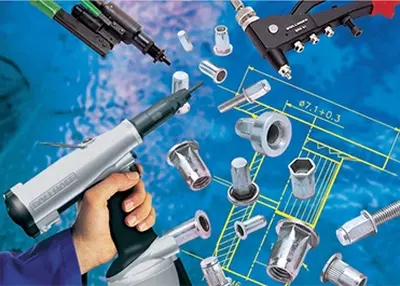 Rivets: 25 Types Of Introduction And User GuideSeptember 26, 2023Rivets are parts that join multiple components and structures together to form a complete body. These parts can be manipulated with some specialized tools. One of the panaceas of manufacturing is rivets. Depending on their design requirements and performance, different types of rivets can be used.view
Rivets: 25 Types Of Introduction And User GuideSeptember 26, 2023Rivets are parts that join multiple components and structures together to form a complete body. These parts can be manipulated with some specialized tools. One of the panaceas of manufacturing is rivets. Depending on their design requirements and performance, different types of rivets can be used.view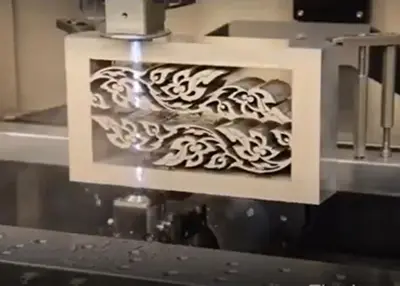 CNC Turning Process And Process AnalysisJune 21, 20221. The content of CNC turning processThe CNC turning process is the sum of the methods and technical means used when CNC lathes are used to process parts. Its main contents include the following aspec...view
CNC Turning Process And Process AnalysisJune 21, 20221. The content of CNC turning processThe CNC turning process is the sum of the methods and technical means used when CNC lathes are used to process parts. Its main contents include the following aspec...view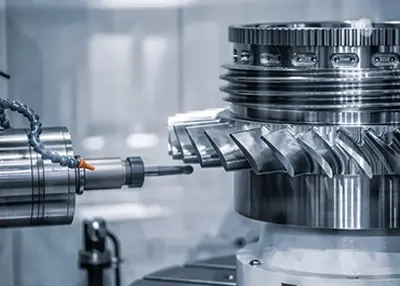 Importance Of CNC Machining In Manufacturing Different PartsOctober 24, 2023CNC machining services help you to manufacture and fabricate different parts of metal as per the requirements. This process also helps in creating tolerances for various materials and metal parts. This process is usually a subtractive method of producing metal parts.view
Importance Of CNC Machining In Manufacturing Different PartsOctober 24, 2023CNC machining services help you to manufacture and fabricate different parts of metal as per the requirements. This process also helps in creating tolerances for various materials and metal parts. This process is usually a subtractive method of producing metal parts.view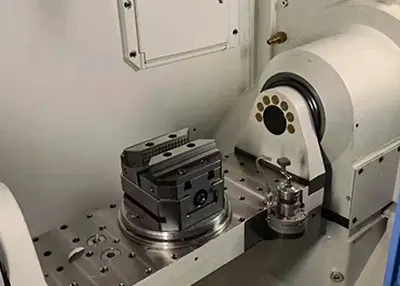 What Industries Use Stainless Steel?October 27, 2023Stainless steel is the abbreviation of stainless and acid-resistant steel, air, steam, water and other weak corrosive media or with stainless steel is called stainless steel, and will be resistant to chemical corrosive media (acids, alkalis, salts and other chemical corrosion) corrosion of the steel is called acid-resistant steel.view
What Industries Use Stainless Steel?October 27, 2023Stainless steel is the abbreviation of stainless and acid-resistant steel, air, steam, water and other weak corrosive media or with stainless steel is called stainless steel, and will be resistant to chemical corrosive media (acids, alkalis, salts and other chemical corrosion) corrosion of the steel is called acid-resistant steel.view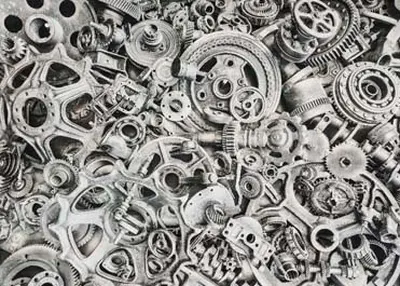 In-Depth Overview: What Are Non-Ferrous Metals?August 7, 2023Metals may be found everywhere and are used for a variety of purposes. There are two different types of metals, ferrous and non-ferrous—based on how much iron they contain. Non-ferrous metals are a c...view
In-Depth Overview: What Are Non-Ferrous Metals?August 7, 2023Metals may be found everywhere and are used for a variety of purposes. There are two different types of metals, ferrous and non-ferrous—based on how much iron they contain. Non-ferrous metals are a c...view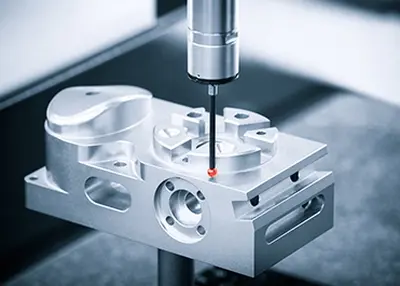 Better CNC Parts Through Fine tuning of TolerancesOctober 13, 2023Tolerances that are too tight can require rework, which in turn drives up costs. If tolerances are too loose, the part may not fit with the mating part. So to optimize your designs, know what tolerances are needed and when: Standard tolerances can improve quality, ensure fast repeatability and reduce manufacturing costs.view
Better CNC Parts Through Fine tuning of TolerancesOctober 13, 2023Tolerances that are too tight can require rework, which in turn drives up costs. If tolerances are too loose, the part may not fit with the mating part. So to optimize your designs, know what tolerances are needed and when: Standard tolerances can improve quality, ensure fast repeatability and reduce manufacturing costs.view